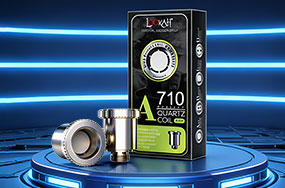The US Food and Drug Administration (FDA) has just authorized a tobacco company to market a reduced nicotine cigarette as a reduced risk product.
While most remain misinformed about the health risks derived from consuming nicotine, public health experts have repeatedly highlighted that it is the tar and other carcinogenic chemicals found in cigarettes that cause disease, not nicotine.
To the shock of many, the FDA is ignoring the science on this and has just granted 22nd Century Group the right to market its VLN King and VLN Menthol King combusted, filtered cigarettes as modified risk tobacco products. In his blog, tobacco harm reduction expert Clive Bates is calling this move the agency’s “most ill-judged moves to date.”
“It has done this because these products are reduced in nicotine and, FDA concludes, anyone who is willing to smoke them will experience lower exposures to nicotine. But we have known for a long time that “people smoke for the nicotine but die from the tar” (Mike Russell). This is a product that reduces the nicotine but keeps the tar,” said Bates.
Cigarettes granted reduced-risk status
In a press release titled “FDA Authorizes Marketing of Tobacco Products that Help Reduce Exposure to and Consumption of Nicotine for Smokers Who Use Them,” and the formal documentation for VLN King / VLN Menthol King, the agency grants an MRTP (Modified Risk Tobacco Product) status to these products.
Bates explained the risk communication package authorized by FDA.
“The MRTP allows certain reduced exposure claims regarding nicotine, including:
“95% less nicotine.”
“Helps reduce your nicotine consumption.”
“…Greatly reduces your nicotine consumption.”
Bates explained further:
“I think there are four main problems with this:
A. A diversion from better options. The only value these products have in public health terms is if smokers don’t use them because they are so unsatisfying, and switch to something with lower risk (that is the promise of a VLN rule). If they do use them, they are still exposed to thousands of toxins from smoke and no one would be happy with vaping products that create the toxic exposures created by VLN cigarette products. However, the purpose of marketing communication is precisely to encourage people to buy these products – that is what 22nd Century exists for. If people want to reduce their health risks, then they are far better advised to switch to non-combustible vaping or heated tobacco products. So for health-conscious smokers, this is a diversion from a strategy that would actually help them. Instead, the authorized claims falsely promote reduced nicotine exposure as a health benefit, though with the sly disclaimer: “Nicotine is addictive. Less nicotine does NOT mean safer. All cigarettes can cause disease and death.” What, then, is the point?
B. Not marketed for smoking cessation. This is not being marketed as a smoking cessation strategy. FDA and 22nd Century are not saying “use these as part of your journey to smoking abstinence“. The claims relate to reduced exposures to nicotine arising from ongoing smoking, not a smoking cessation strategy. The 22nd Century products have not been evaluated by FDA as a smoking cessation strategy either for the PMTA or MRTP. I can’t think of anyone in public health that would suggest switching to these products to quit smoking – rather than tying Rx meds, NRT, or a non-combustible.
C. Misunderstands nicotine use. It’s almost as if FDA has no idea about smoking as a nicotine-seeking behavior and the struggles that users would have with switching to these products (see rampant non-compliance in trials of VLNC cigs – see Benowitz et al. 2015). So where is the caution to smokers about the negative effects (withdrawal, craving) on them of reduced nicotine? Where is the consumer protection caution that “these products may not be as satisfying as your normal brand“. It implies that the drop in nicotine exposure just somehow happens as a result of using the product with no other impact on the user.
D. Making nicotine the problem. These claims strongly imply that nicotine is the problematic agent that needs to be cut out as far as possible. Yet that is not the case (or a gross over-simplification) and perceptions of nicotine risk are already wildly inaccurate among the public and professionals. Only 21.4% of the US public (HINTS, 2019) disagrees that the nicotine in cigarettes is the substance that causes most of cancer caused by smoking. How does this help Americans really understand and act accordingly?”
Low nicotine cigarettes
Back in 2017, the FDA had announced a new comprehensive plan for tobacco and nicotine regulation, which included lowering the amount of nicotine in cigarettes in order to minimize addiction. The plan was retracted in 2019.
VLNCs (very low nicotine cigarettes), would have contained nicotine at levels that do not produce physiological effects. Even back then public health experts have expressed concern that these cigarettes will be delivering the same amount of harmful chemicals without the benefits perceived by the smoker, hence could possibly lead them to smoke more.
Sadly, even many medical professionals remain misinformed. A recent study conducted by researchers from Rutgers University in New Jersey, titled “Nicotine Risk Misperception Among US Physicians” surveyed doctors from six specialties (family medicine, internal medicine, obstetrics and gynecology, cardiology, pulmonary and critical care to hematology and oncology) to explore their knowledge and recommendations about tobacco use, between September 2018 and February 2019. A total of 1,020 doctors were asked about their understanding of tobacco treatment practices, harm reduction beliefs, and tobacco and e-cigarette use.
GPs more likely than oncologists to link nicotine to cancer
Sadly, the compiled data indicated that 83% of the doctors inaccurately believed that nicotine directly contributed to heart disease and 81% to chronic obstructive pulmonary disease (COPD). The responses also indicated that pulmonologists were less likely than other specialties to link nicotine consumption to COPD and family doctors were more likely than oncologists to believe that nicotine causes cancer.
“Physicians must understand the actual risk of nicotine use as they are critical in the prescription and recommendation of FDA-approved nicotine replacement therapy products to help patients who use other dangerous forms of tobacco,” said Michael B. Steinberg, director of the Rutgers Tobacco Dependence Program and a professor and chief of the Division of General Internal Medicine at the Rutgers Robert Wood Johnson Medical School. “Doctors should be able to accurately communicate these risks, which may include low-nicotine cigarettes, which are not safer than traditional cigarettes.”
Source: https://www.vapingpost.com/2021/12/29/fdas-latest-move-sends-the-wrong-message-about-nicotine-and-smoking/












































































comments